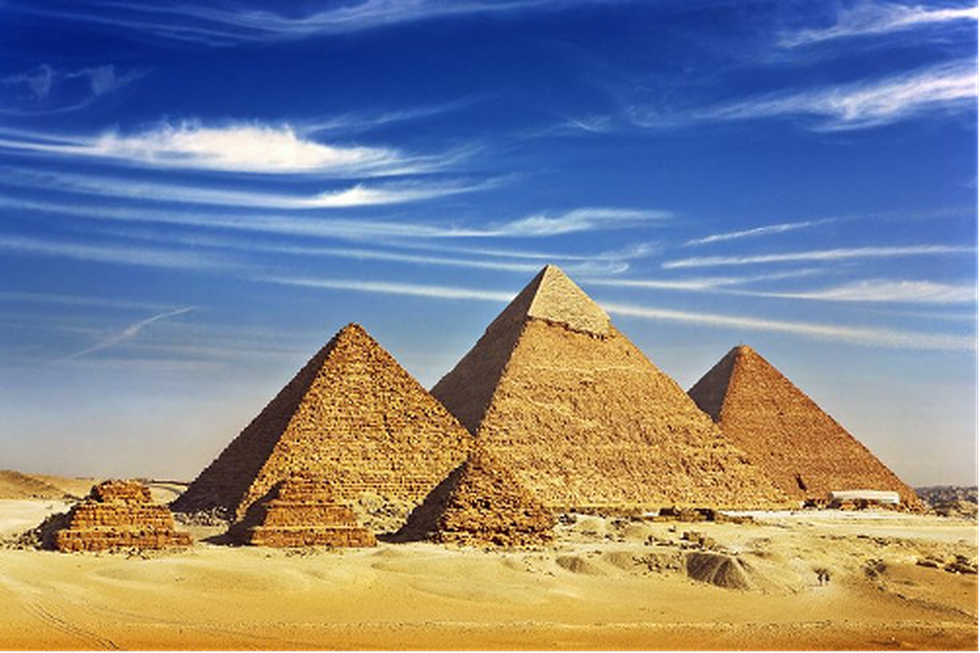
Key Facts about Egypt:
- Location: Egypt is a transcontinental country situated in northeastern Africa and the Sinai Peninsula in Western Asia (Middle East).
- Capital: Cairo
- Boundaries:
- The country borders the Mediterranean Sea to the north and the Gulf of Suez and the Red Sea to the east.
- It is bordered by Libya in the west, the Palestinian territory (Gaza Strip) and Israel in the northeast, and Sudan in the south.
- It shares maritime borders with Cyprus, Turkey and Greece in the Mediterranean Sea, and with Jordan and Saudi Arabia in the Red Sea.
- Independence: Modern Egypt became independent in 1922.
- Population: With 12 million inhabitants (2021), Egypt is the most populous country in the Arab world.
- Language: Spoken language is Modern Standard Arabic; the colloquial language is the Egyptian-Arabic dialect (Masri).
- Islam is the dominant religion in Egypt with an estimated 85-90% of the population is Sunni Muslim.
- Major rivers: The famous River Nile is the only river that flows in Egypt throughout the year.Around 98% of the country's population resides in the Nile River Valley.
Suez Canal:
- It is a 30 km (120 miles)-long artificial sea-level waterway located in Egypt.
- It connects the Mediterranean Sea with the Gulf of Suez, a northern branch of the Red Sea.
- It provides the shortest maritime route between Europe and the lands lying around the Indian and western Pacific oceans.
- It is one of the world’s most heavily used shipping lanes.
What is Exercise Cyclone-I?
- It is the first ever joint exercise between the special forces of the Indian Army and the Egyptian Army.
- Location: Jaisalmer in Rajasthan
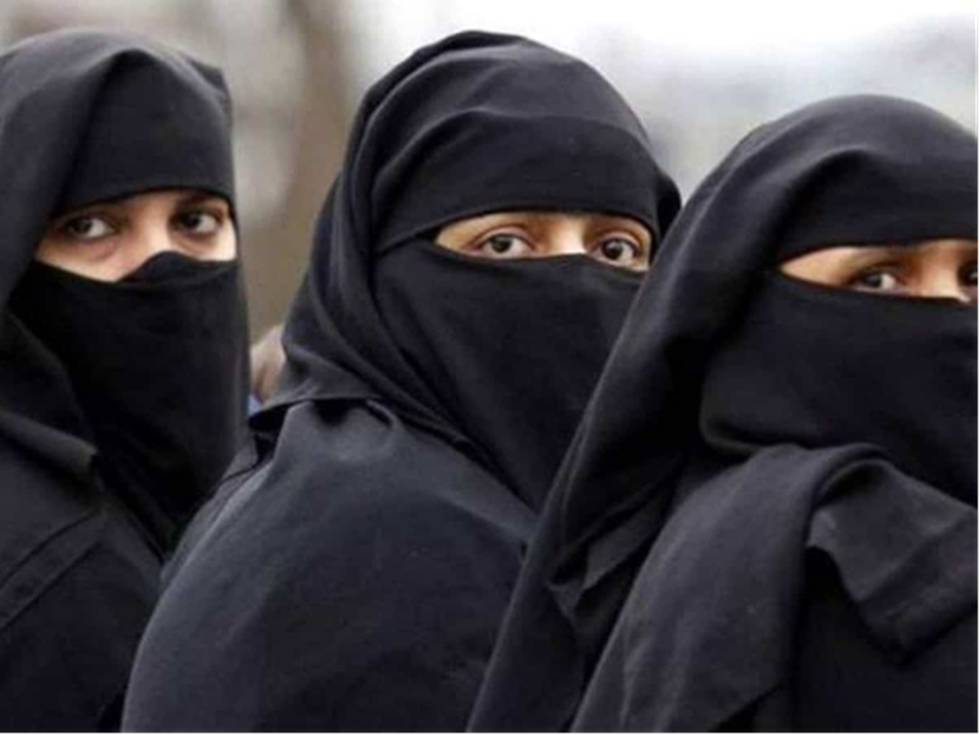
About Nikah halala:
- The term “Nikah” and “Halala” both are Arabic terms.
- “Nikah” means Marriage and “Halala” means to make something halal or permissible.
- The expression “Nikah Halala” literally means a marriage to make something halal or permissible.
- As per Muslim Law, a man cannot remarry his wife after he divorced her, unless the wife is married to another man and gets divorced from that man (second husband) or after the death of the second husband.
- Thus, the process of making the woman permissible for her first husband by giving her marriage to a third person with a pre-condition is known as Nikah Halala also known as Tahleel marriage.
- In this process, the third person consummates the marriage with the object to make the woman permissible for her first husband.
- Does the Quran permit this? There is no sanction in the holy Quran for such marriages.
- Legality of Nikah halala in India:
- The Muslim Women (Protection of Rights on Marriage) Act, 2019 passed after the invalidation of triple talaq by the Supreme Court, is silent on nikah halala.
- The Act made instant triple talaq a criminal offence but steered clear of halala which takes place as a consequence of triple talaq.

Why in News?
- The Supreme Court said that the chargesheet filed by investigating agencies in a criminal case in court is not a public document which could be directed to be put in public domain by uploading it on a website and also it cannot be revealed under Right to Information Act.
What is a Chargesheet?
- According to Section 173 of Code of Criminal Procedure (CrPC), a charge sheet is a report generated by police officers after investigating a case.
- It contains all the stringent records right from the commencement of investigation procedure of lodging an FIR to till the completion of investigation and preparation of final report.
- It contains the names of the people brought in the custody, the charges they are brought in for and the identity of the accusers.
- Once the charge sheet has been submitted to a court of law, prosecution proceedings against the accused begin.
- Time limit for filing a Charge Sheet:
- It is to be filed within 60 days from the date of arrest of the accused in cases triable by lower courts and 90 days in cases triable by Court of Sessions.
- If the charge sheet is not filed within the prescribed time mentioned above, the accused has a right to default bail.
- A charge sheet is distinct from the First Information Report (FIR).
What is the First Information Report (FIR)?
- It is a written document prepared by a Police officer based on information given by an aggrieved person or any other person either in writing or made orally about the commission of a Cognizable Offence.
- Investigation is started only after filing of the FIR.
- Who can file an FIR? Anyone can file a FIR, whether it is the victim, victim’s family or friends, or any witness to a crime.
- An FIR can only be lodged in case of cognizable offences.
What is a Cognizable Offence?
- It is one in which the police may arrest a person without warrant.
- The police are authorized to start investigation into a cognizable case on their own and do not require any orders from the court to do so.
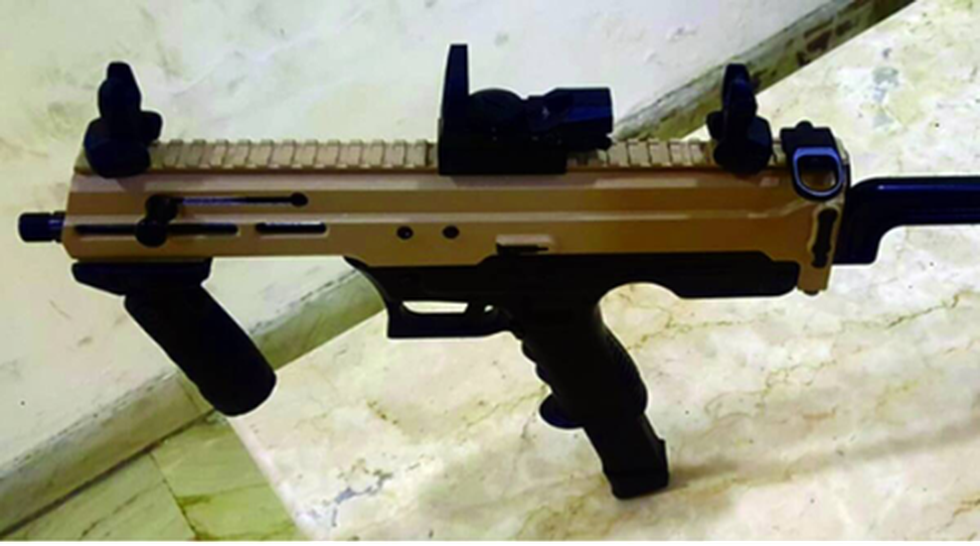
About ASMI Machine Pistol:
- ASMI (meaning pride/ self-respect) is India’s first indigenous 9mm machine pistol.
- Developed jointly by DRDO (Defence Research and Development Organisation) and Indian Army.
- It weighs under 2kg and can fire at a range of 100 metres.
- It has an 8-inch barrel and 33 rounds of high-capacity magazine load.
- It would cost around Rs 50,000 per unit.
- The 3D printing process was used to design and prototype the pistol’s various parts, including its trigger components.
- It is set to replace the 9mm pistols in the Indian defence forces.
What is a Machine pistol?
- It is a relatively small, self-loading automatic handgun with a high rate of fire and can fire in intermittent or sustained bursts.
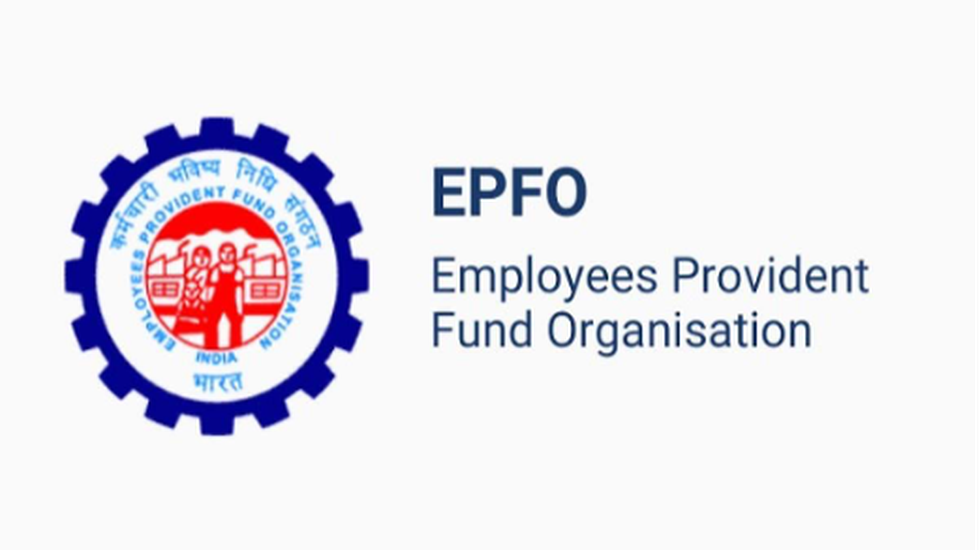
Why in News?
- In 2014, the central government issued a notification allowing an EPFO member and their employer to jointly avail the option of contributing 8.33 percent of the actual salary to the Employee Pension Scheme (EPS) without any ceiling, thus enabling the member to receive a higher pension.
- A six-month deadline — later extended by another six months was set to opt for this provision.
- Recently the Supreme Court ruled that employees who had not exercised the option for higher pension would get a further four months from the date of this court order to do so, with their employer’s consent.
About Employees Provident Fund Organisation (EPFO):
- It is a statutory body under the Employees' Provident Funds and Miscellaneous Act, 1952.
- It is under the administrative control of the Union Ministry of Labor and Employment.
- Structure of EPFO:
- The Act and all its schemes are administered by a tripartite board called the Central Board of Trustees.
- The board comprises representatives of the Government (both Central and State), employers, and employees.
- The board is chaired by the Union Minister of Labour and Employment, Government of India.
- The Central Board of Trustees operates 3 schemes:
- The Employees’ Provident Funds Scheme, 1952 (EPF)
- The Employees’ Pension Scheme, 1995 (EPS)
- The Employees’ Deposit Linked Insurance Scheme, 1976 (EDLI)
- EPFO is also the nodal agency for implementing Bilateral Social Security Agreements with other countries on a reciprocal basis.
- Coverage: The schemes offered by EPFO cover Indian workers and international workers (from countries with whom the EPFO has signed bilateral agreements).
About Employee Pension Scheme (EPS):
- The scheme makes provisions for employees working in the organized sector for a pension after their retirement at the age of 58 years.
- The benefits of the scheme can be availed only if the employee has provided a service for at least 10 years.
- Under Employees’ Provident Funds Scheme(EPF), both the employer and employee contribute 12% each of the employee’s pay towards the Employees Provident Fund (EPF).
- While the employee’s entire share is contributed towards EPF, 33% of the employer’s share goes towards the Employees’ Pension Scheme (EPS) and 3.67% goes towards EPF contribution every month.

Why in news?
- The research paper has deciphered many negative impacts of multiple co-occurring alien plants on biodiversity and what it means for conservation in the era of global changes.
- India’s biodiverse ecosystems are threatened by a variety of alien plants like Lantana Camara, Parthenium hysterophorous, and Prosopis juliflora introduced during British colonisation.
- Co-occurring invasive plants like Ageratum conyzoides, and Pogostemon benghalensis cause ecological homogenisation in invaded regions.
- Multiple alien species together affected soil nutrients, which may have depleted the richness of diverse plants.
- Invasions might slowly deplete the native plant populations and might lead to diseases in the herbivores.
Key facts about Kanha Tiger Reserve:
- It is nestled in the Maikal range of Satpuras in Madhya Pradesh, the heart of India that forms the central Indian highlands.
- This Tiger Reserve stretches over an area of 940 square km in the two districts Mandla and Balaghat in the state of Madhya Pradesh.
- Kanha is best known for its evergreen Sal forests.
- Fauna: Barasingha, Tiger, Leopard, Dhole, Bear, Gaur and Indian Python etc.
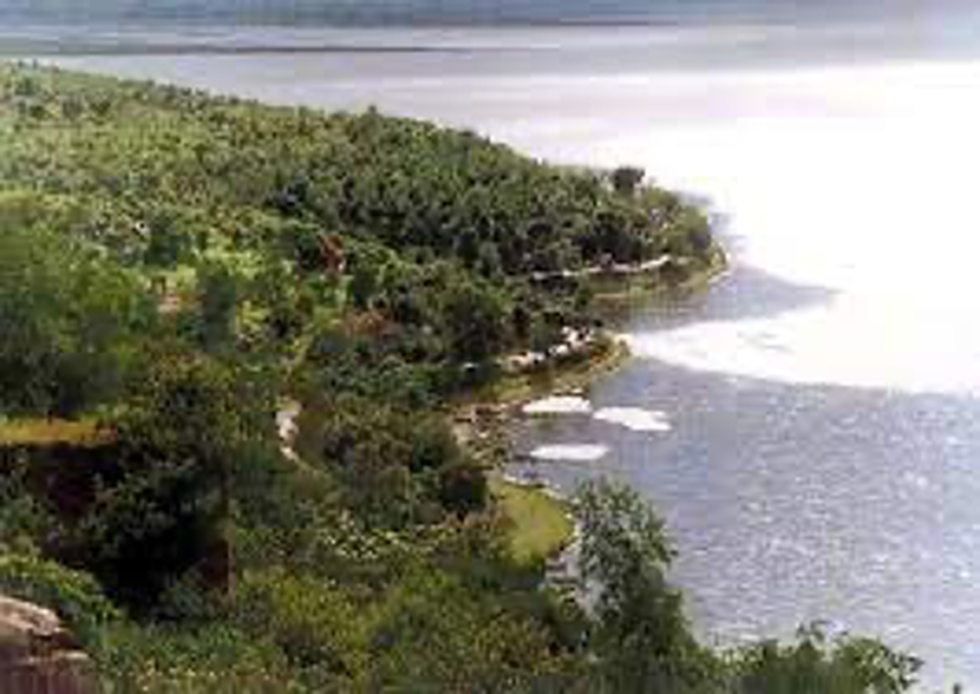
Why in news?
- The state government has permitted the operation of the cruise with a capacity of 50 passengers, but even broad estimates suggest that human sewage of 19,000 litres will be generated in a week alone.
- The cruise boat operates on diesel, which is a clear violation. It will also directly violate the provisions of the Environment Protection Act, of 1986.
Key features of Bhoj wetland:
- It consists of two contiguous human-made reservoirs, the upper and lower lakes located in the city of Bhopal, Madhya Pradesh.
- The lakes are very rich in biodiversity, particularly for macrophytes, phytoplankton, zooplankton, both natural and cultured fish species, both resident and migratory birds, insects, reptiles and amphibians.
- It is designated as the Ramsar site in 2002.
The Environment Protection Act, 1986:
- It was enacted to provide for the protection and improvement of the environment.
- It empowers the Central Government to establish authorities charged with the mandate of preventing environmental pollution in all its forms and tackling specific environmental problems.
- One of the features of this act is: No person shall discharge or emit or permit to be discharged or emitted any environmental pollutant in excess of such standards as may be prescribed.

About the RE-HAB Project
- Under this project, Bee-fences are created by setting up bee boxes in the passageways of elephants to block their entrance to human territories.
- It is a cost-effective way of reducing human-wild conflicts without causing any harm to the animals.
- It is an initiative of the Khadi and Village Industries Commission (KVIC) under the submission of the National Honey Mission.
Key facts of KVIC
- It is a statutory bodyestablished under the Khadi and Village Industries Commission Act, of 1956.
- The KVIC is charged with the planning, promotion, organisation and implementation of programmes for the development of Khadi and other village industries in the rural areas in coordination with other agencies engaged in rural development wherever necessary.
- It works under the Ministry of Micro, Small and Medium Enterprises.

About Mahabali frog:
- The Mahabali frog is also known as the pignose frog.
- It is endemic to the Western Ghat.
- Habitat: These frogs prefer loose, damp and well-aerated soil close to ponds and ditches or streams.
- Specific Traits of this frog
- Unlike other frogs, it has very short hind legs, which do not allow it to leap from one spot to another.
- It buries itself all through the year and surfaces only one day to lay eggs.
- Conservation Status:
- IUCN - Near Threatened
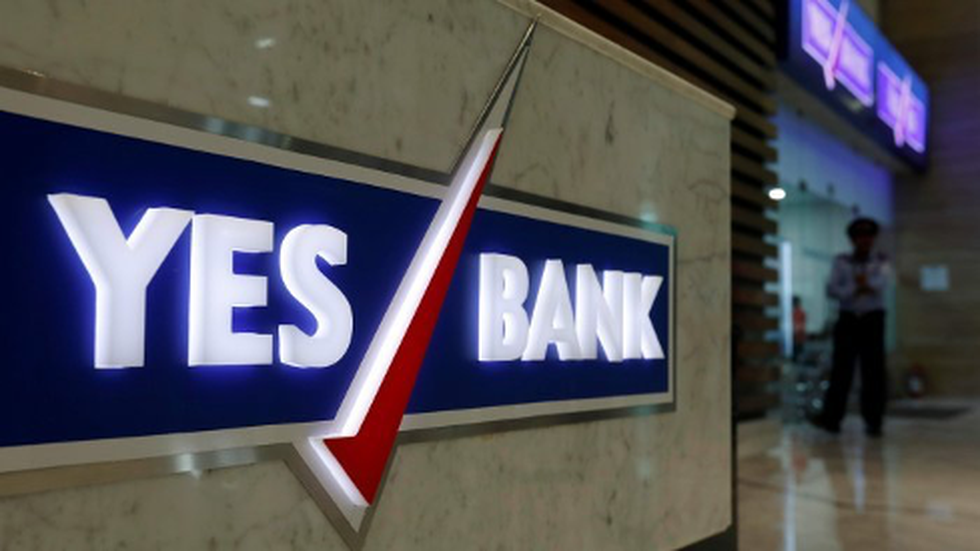
About AT1 bonds:
- These bonds are unsecured bonds that have perpetual tenors, are issued by banks and have no maturity date.
- They have a call option, which can be used by the banks to buy these bonds back from investors. These bonds are typically used by banks to bolster their core or tier-1 capital.
- These AT1 bonds are subordinate to all other debt and only senior to common equity.
- These bonds were introduced by the Basel accord after the global financial crisis to protect depositors.





























































































































































.png)
.png)
.png)
.png)
.png)


.png)
.png)
.png)





.png)
.png)






.png)
.png)
.png)
.png)
.png)
.png)
.png)
.png)
.png)

.png)







.png)
.png)


.png)
.png)
.png)


.png)

.png)
.png)





.jpg)

.png)
.png)


.png)

.png)
.png)
.png)

.jpg)

.jpg)


.png)

.png)
.png)
.png)
.png)
.png)
.png)
.png)
.png)
.png)
.png)




.png)

.png)





.png)
.png)
.png)
.png)
.png)
.png)
.png)
.png)
.png)
.png)
.jpg)
.jpg)

.png)
.png)
.png)
.png)
.png)
.png)
.png)
.png)
.png)
.png)
.png)
.png)
.png)
.png)
.png)
.png)
.png)
.png)
.png)
.png)
.png)
.png)



.png)
.png)

.jpg)
.jpg)


.jpg)
.jpg)
.jpg)
.jpg)
.jpg)

.jpg)








.jpg)
.jpg)
.jpg)
.jpg)
.jpg)

















.jpg)
.jpg)







.jpg)















.jpg)
.jpg)






























































































.jpg)
.jpg)


























.jpg)

.jpg)










.jpg)








.jpg)




.jpg)










.jpg)


















.jpg)












































.jpg)














.jpg)
.jpg)
.jpg)





.jpg)

.jpg)
.jpg)





































































.jpg)


































.jpg)
.jpg)
















































.jpg)












.jpg)


.jpg)




.jpg)
.jpg)
.jpg)

.jpg)
.jpg)
.jpg)
.jpg)

.jpg)
.jpg)
.jpg)

.jpg)
.jpg)
.jpg)
.jpg)
.jpg)
.jpg)
.jpg)
.jpg)

.jpg)


.jpg)
.jpg)
.jpg)
.jpg)
.jpg)
.jpg)
.jpg)
.jpg)
.jpg)
.jpg)











.jpg)
.jpg)





.jpg)
.jpg)
.jpg)
























.jpg)
























.jpg)









.jpg)
.jpg)







.jpg)
.jpg)









































.jpg)
.jpg)
.jpg)
.jpg)
.jpg)

.jpg)
.jpg)
.jpg)
.jpg)
.jpg)


.jpg)
.jpg)
.jpg)
.jpg)
.jpg)

.jpg)
.jpg)
.jpg)
.jpg)
.jpg)
.jpg)
.jpg)
.jpg)
.jpg)
.jpg)
.png)

.png)
.png)

.png)
.png)
.png)
.png)


.jpg)
.jpg)

.jpg)
.jpg)
.jpg)

.png)
.png)
.png)
.png)
.png)
.png)
.png)

.png)
.png)
.png)
.png)
.png)
.png)
.png)
.png)
.png)
.png)





































































-min.png)



.png)




.png)








































